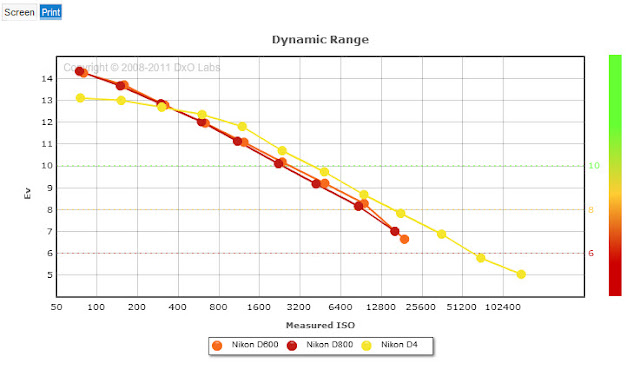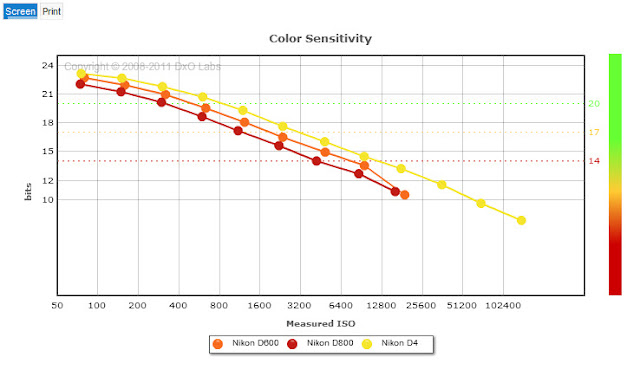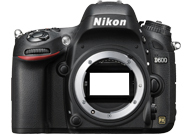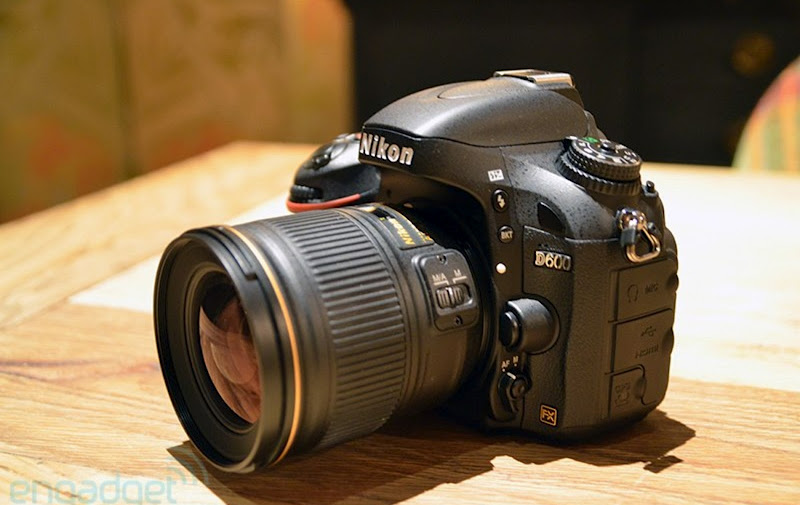If you like this post, help us share it
Nikon’s recently released full-frame sensor DSLR, the D600, has just gone through DxOMark’s image quality evaluation tests. We know it will be good, but how good? Is it as good as the D800 or the D4?

DxOMark ranked the Nikon D600 #3 spot, just behind the Nikon D800 and Nikon D800E. The verdict says:
“The D600 is an affordable camera that places a high premium on image quality, as it ranks just behind the top performing Nikon D800 and Nikon D800E. It is also a significant improvement over the high-end professional flagship DSLRs, the Nikon D3X and the Nikon D4”
There is something wrong with this verdict. To say the Nikon D600 is significant improvement over the high end Nikon D4 is just misleading in many ways.
Check out the scores:

As I have discussed before in this post, you really need to fully understand DxOMark’s results before making judgement. The scoring of each category is based on the highest score which usually occurs at ISO 100. For example, Nikon D600 scored 14.2 EVs for dynamic range, this score happened to be at ISO 100. What happened to the dynamic range performance at ISO 800, ISO 1600, they are being neglected.
Another aspect that is important to know is DxOMark provided two sets of scores, one for “print” (scored based on 300dpi 8×12’ 8MP print) and one for “screen” scored (based on 1:1 crop viewed 100% on screen). And the DxOMark score is based on the “print” results. It is important to know which set of score is most relevant to you before making your judgement.
ISO Performance
So you would expect the Nikon D4 being 16MP with a pixel pitch of 7.21 µm should out perform the Nikon D600 24MP which has a pixel pitch of 5.9 µm in ISO performance. Yet DxOMark scored higher with the Nikon D600.
The scoring is based on the “print” results which is measured using a 300dpi 8×12’ 8MP print. As you see the results are very close for all three cameras.

If we then look at the “Screen” results which is viewed with 1:1 magnification on the screen. The Nikon D4 is clearly better. Unfortunately, if we only print at 8×12”, we won’t see the difference. What’s interesting is that the Nikon D600 performs better than the Nikon D800, mostly due to the lower megapixel.

Dynamic Range
For dynamic range, Nikon D600 and D800 do perform better at ISO 100 –200 and this is where the DxOMark score was taken. However, the Nikon D4 has a better dynamic range at above ISO 200. So if you do shoot frequently at higher ISO, then the Nikon D4 will give you a better dynamic range.

Colour Depth
As for colour depth, all three cameras have a similar results based on the “print” data. But when we switched to the “screen” results, the Nikon D4 clearly came on top.


So there you go, DxOMark provided two sets of results (print and screen) and its scores are based on the “print” results which is some kind of normalisation to counter the different MP resolution on each camera. As mentioned earlier, It is important to know which set of scores is most relevant to you before making your judgement. Seeing your image at 1:1 crop is very different to seeing it on a 8×12’ print.
Overall, the Nikon D600 is a very capable camera that inherited a lot of nice features from the Nikon D800. It performs very close to the D800, but with a cheaper price tag. No doubt its image quality is exceptional and DxOMark has ranked it #3. In terms of ISO performance, the Nikon D600 performs better than the D800 due to the lower megapixel, in some cases, it even has a better dynamic range and colour depth than the D800.
DxOMark commented that the Nikon D600 is a significant improvement over the high-end professional flagship DSLRs, the Nikon D3X and the Nikon D4. I find this misleading. If you are judging the three cameras by prints, then yes you probably can’t tell much difference simply because you are only viewing the image from a 8×12” photo. However the performance of D4 is still higher if you look further than the “print” results. After all, the Nikon D4 has a pro body, 11 fps, 51AF points and twice the battery capacity which makes it the flagship DSLR.
For the best bang for buck, the Nikon D600 and Nikon D800 surely win in this category.
If you haven’t order your D600 yet, pre-order yours now at B&H
Here is a quick spec comparison between the Nikon D600, D800 and D4.
 |
 |
 |
|
| Type | Semi-Pro DSLR | Semi-Pro DSLR | Professional |
| Announced | 2012-09-13 | 2012-02-07 | 2012-01-06 |
| Indicative price (USD) | 2100 | 2999 | 5999 |
| Sensor type | CMOS | CMOS | CMOS |
| Resolution | 6080 x 4028 | 7424 x 4924 | 4992 x 3292 |
| Sensor photo detectors (Mpix) | 24.49 | 36.56 | 16.43 |
| Sensor size (mm) | 24.0 x 35.9 | 24.0 x 35.9 | 23.9 x 36.0 |
| Color filter array | RGB | RGB | RGB |
| Pixel pitch (µm) | 5.9 | 4.7 | 7.21 |
| Bits per pixel | 14.0 | 14.0 | 14.0 |
| Focal length multiplier | 1.00 | 1.00 | 1.00 |
| Aspect Ratio | 3:2 | 3:2 | 3:2 |
| ISO latitude | 50 – 25600 | 50 – 25600 | 50 – 204800 |
| Shutter type | Mechanical | Mechanical | Mechanical |
| Fastest – Slowest speed (s) | 1/4000 – 30.0 | 1/8000 – 30.0 | 1/8000 – 30.0 |
| Frame rate (fps) | 5.5 | 4 or 6 | 11 |
| Battery type | Li-ion, EN-EL15, 7.0V, 1900mAh | Lithium-Ion EN-EL15 | Lithium-Ion EN-EL18 |
| Camera material | Magnesium alloy top and rear, polycarbonate front-plate | Metal | Magnesium alloy |
| View finder coverage | 100 | 100 | 100 |
| Monitor type | LCD | LCD | Wide Viewing Angle TFT-LCD |
| Monitor size | 3.2 | 3.2 | 3.2 |
| Monitor pixel | 921000 | 921000 | 921000 |
| Number of autofocus points | 39 | 51 | 51 |
Where can I find the equipment seen on this site?
If you find this site useful and planning to purchase any of the equipment seen on this site, please show your support by purchasing your photo equipment at B&H Photo Video, or through any of the affiliate links seen on this site.


